The Divine Birth Story of Ganesha That Makes Ganesh Chaturthi Special
Abhishek dehariya | Aug 17, 2025, 22:23 IST
Ganesh Chaturthi
( Image credit : Freepik )
Every year, millions of devotees welcome Lord Ganesha with love, songs, and vibrant celebrations during Ganesh Chaturthi. But the story of His birth is more than just a myth it’s a heart-touching tale of devotion, maternal love, divine justice, and a powerful lesson in faith. This is the story of how the remover of obstacles, the god of wisdom, and the beloved “Bappa” came into the world.
Ganesh Chaturthi is one of India’s most loved and widely celebrated festivals, bringing streets to life with music, dance, and devotion. While the festival is famous for its grandeur, the mythological story of Lord Ganesha’s birth carries deep spiritual significance. It tells us about unconditional love between a mother and her child, the importance of respect, and how even gods must acknowledge certain principles of justice. Let’s revisit this divine tale that still moves millions every year. 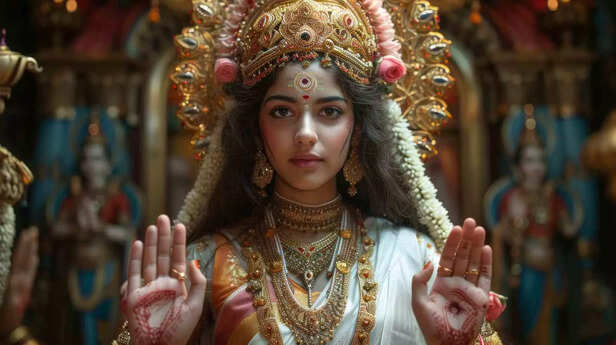
The story begins with Goddess Parvati, consort of Lord Shiva. One day, as she prepared for a bath in Mount Kailash, she wished for someone to guard her privacy. She created a boy out of sandalwood paste, breathed life into him, and declared him her son Ganesha. She gave him the duty to stand at the door and not allow anyone to enter. This scene represents the creative power of a mother, and how love can give life even without a father’s involvement symbolizing independence and maternal energy.
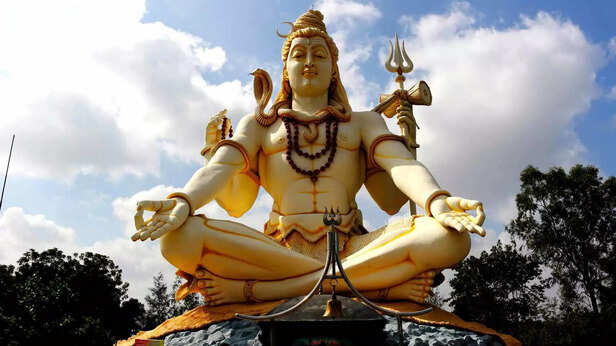
While Ganesha stood guard, Lord Shiva returned home after a long meditation. Not knowing who Ganesha was, Shiva tried to enter, but the boy blocked his way, refusing entry as per his mother’s orders. This act of loyalty shows absolute devotion to duty, even in the face of great power.
Here lies a hidden message: One must stand firm for righteousness, even if challenged by authority.

Shiva, surprised and slightly angered, attempted to reason with Ganesha, but the boy remained firm. What began as a disagreement soon turned into a fierce battle. The other gods tried to intervene, but Ganesha’s determination and unmatched strength overpowered them all. This is where the story teaches us that strength is not about size or age, but about the courage in your heart.
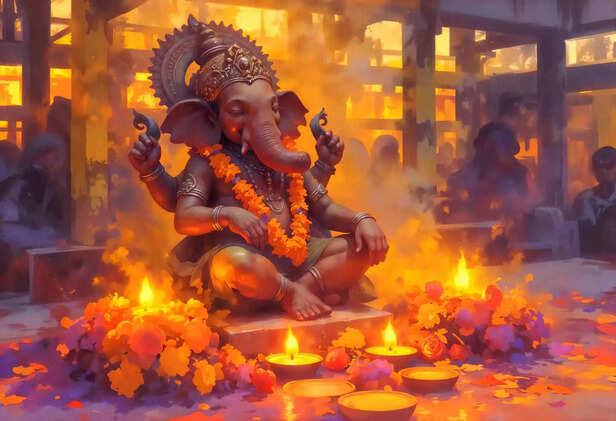
Finally, Lord Shiva, in a moment of fury, severed Ganesha’s head with his trident. When Goddess Parvati learned of this, her grief turned into unstoppable rage. She vowed to destroy the universe unless her son was brought back to life. This moment in the story reflects the boundless love of a mother, who would fight against all odds for her child.
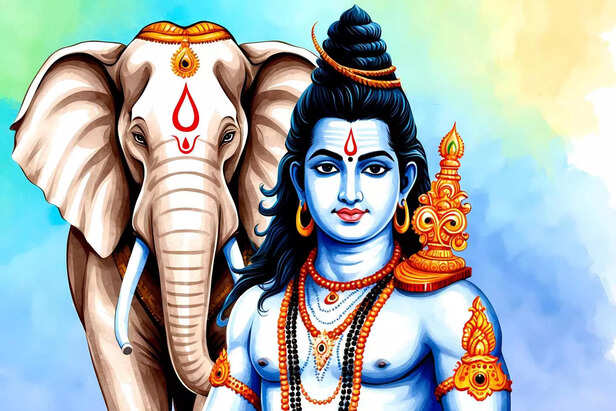
To calm Parvati, Lord Shiva promised to revive Ganesha. He sent his followers to bring back the head of the first living being they found facing north. They soon returned with the head of a mighty elephant. This choice was symbolic the elephant represents wisdom, strength, and patience.
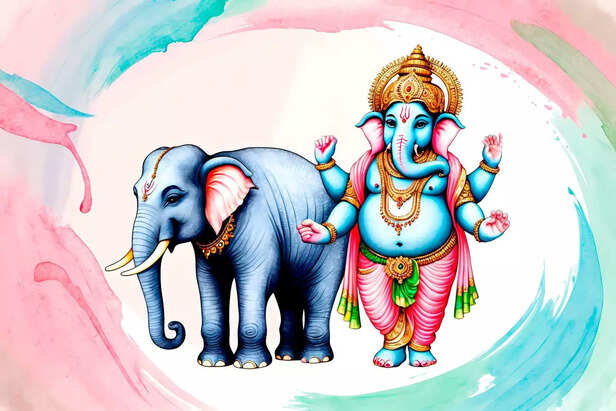
Shiva placed the elephant’s head onto Ganesha’s body and revived him. The moment was not just a rebirth it was the divine transformation of a mortal child into Vighnaharta (Remover of Obstacles). Shiva blessed Ganesha, declaring that before any worship or auspicious beginning, his name would be remembered first. This is why every Hindu ritual begins with “Om Gan Ganapataye Namah”
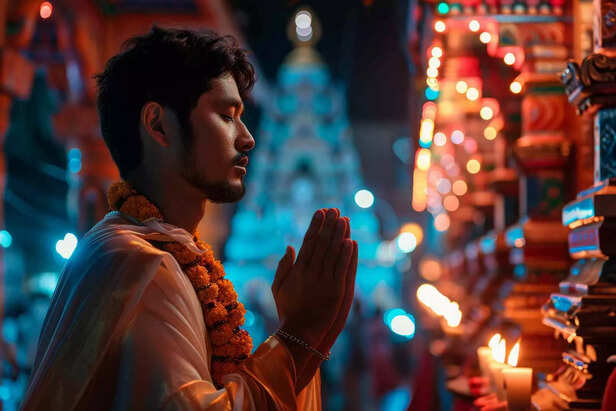
The birth of Ganesha teaches us multiple life lessons:

Ganesh Chaturthi is more than a festival it’s a reminder of this eternal story. The arrival of Ganesha into our homes symbolizes inviting wisdom, removing negativity, and embracing fresh beginnings. His farewell, during visarjan, teaches us the spiritual truth of life that nothing is permanent, and we must let go with love.
The birth story of Lord Ganesha is not just a myth it is an emotional journey of love, duty, sacrifice, and divine justice. Every Ganesh Chaturthi, when we chant “Ganpati Bappa Morya,” we are not just celebrating a festival we are honoring the values He stands for: wisdom, loyalty, and the strength to protect what is right. Ganesh Chaturthi is a reminder that no obstacle is too big when you have faith, courage, and blessings of Bappa.
Explore the latest trends and tips in Health & Fitness, Travel, Life Hacks, Fashion & Beauty, and Relationships at Times Life!
1. The Divine Creation by Goddess Parvati

Goddess Parvati
( Image credit : Freepik )
The story begins with Goddess Parvati, consort of Lord Shiva. One day, as she prepared for a bath in Mount Kailash, she wished for someone to guard her privacy. She created a boy out of sandalwood paste, breathed life into him, and declared him her son Ganesha. She gave him the duty to stand at the door and not allow anyone to enter. This scene represents the creative power of a mother, and how love can give life even without a father’s involvement symbolizing independence and maternal energy.
2. The Unexpected Encounter with Lord Shiva

Lord Shiva
( Image credit : Freepik )
While Ganesha stood guard, Lord Shiva returned home after a long meditation. Not knowing who Ganesha was, Shiva tried to enter, but the boy blocked his way, refusing entry as per his mother’s orders. This act of loyalty shows absolute devotion to duty, even in the face of great power.
Here lies a hidden message: One must stand firm for righteousness, even if challenged by authority.
3. The Clash of Powe

The Clash of Powe
( Image credit : Freepik )
Shiva, surprised and slightly angered, attempted to reason with Ganesha, but the boy remained firm. What began as a disagreement soon turned into a fierce battle. The other gods tried to intervene, but Ganesha’s determination and unmatched strength overpowered them all. This is where the story teaches us that strength is not about size or age, but about the courage in your heart.
4. The Tragic Beheading

The Tragic Beheading
( Image credit : Freepik )
Finally, Lord Shiva, in a moment of fury, severed Ganesha’s head with his trident. When Goddess Parvati learned of this, her grief turned into unstoppable rage. She vowed to destroy the universe unless her son was brought back to life. This moment in the story reflects the boundless love of a mother, who would fight against all odds for her child.
5. The Search for a New Head

New Head
( Image credit : Freepik )
To calm Parvati, Lord Shiva promised to revive Ganesha. He sent his followers to bring back the head of the first living being they found facing north. They soon returned with the head of a mighty elephant. This choice was symbolic the elephant represents wisdom, strength, and patience.
6. The Birth of the Elephant-Headed God

Elephant-Headed God
( Image credit : Freepik )
Shiva placed the elephant’s head onto Ganesha’s body and revived him. The moment was not just a rebirth it was the divine transformation of a mortal child into Vighnaharta (Remover of Obstacles). Shiva blessed Ganesha, declaring that before any worship or auspicious beginning, his name would be remembered first. This is why every Hindu ritual begins with “Om Gan Ganapataye Namah”
7. The Spiritual Lessons of the Story

Spiritual Lessons
( Image credit : Freepik )
The birth of Ganesha teaches us multiple life lessons:
- Obedience & Loyalty– Ganesha stood by his mother’s word without fear.
- Justice & Responsibility – Even gods must correct their mistakes.
- Transformation Through Forgiveness – From a tragic mistake came a divine blessing
- Wisdom Before Action – Ganesha’s elephant head symbolizes the importance of thinking before reacting.
8. Ganesh Chaturthi – The Celebration of Divine Love

lord Ganesha
( Image credit : ANI )
Ganesh Chaturthi is more than a festival it’s a reminder of this eternal story. The arrival of Ganesha into our homes symbolizes inviting wisdom, removing negativity, and embracing fresh beginnings. His farewell, during visarjan, teaches us the spiritual truth of life that nothing is permanent, and we must let go with love.
The birth story of Lord Ganesha is not just a myth it is an emotional journey of love, duty, sacrifice, and divine justice. Every Ganesh Chaturthi, when we chant “Ganpati Bappa Morya,” we are not just celebrating a festival we are honoring the values He stands for: wisdom, loyalty, and the strength to protect what is right. Ganesh Chaturthi is a reminder that no obstacle is too big when you have faith, courage, and blessings of Bappa.
Explore the latest trends and tips in Health & Fitness, Travel, Life Hacks, Fashion & Beauty, and Relationships at Times Life!
